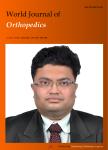Upper extremity disorders in heavy industry workers in Greece
Upper extremity disorders in heavy industry workers in Greece作者机构:Department of Public HealthMedical SchoolUniversity of Patras Medical SchoolUniversity of Athens Department of Orthopaedic SurgeryGeneral Hospital of Patras "Agios Andreas"
出 版 物:《World Journal of Orthopedics》 (世界骨科杂志(英文版))
年 卷 期:2017年第8卷第6期
页 面:478-483页
学科分类:1004[医学-公共卫生与预防医学(可授医学、理学学位)] 100402[医学-劳动卫生与环境卫生学] 10[医学]
主 题:Upper extremity disorders Heavy industry QuickDASH Movement restrictions Occupational diseases
摘 要:AIM To investigate the disability due to musculoskeletal disorders of the upper extremities in heavy industry *** The population under study consisted of 802 employees, both white-and blue-collar, working in a shipyard industry in Athens, Greece. Data were collected through the distribution of questionnaires and the recording of individual and job-related characteristics during the period 2006-2009. The questionnaires used were the Quick Disabilities of the Arm, Shoulder and Hand(QD) Outcome Measure, the Work Ability Index(WAI) and the ShortForm-36(SF-36) Health Survey. The QD was divided into three parameters-movement restrictions in everyday activities, work and sports/music activities-and the SF-36 into two items, physical and emotional. Multiple linear regression analysis was performed by means of the SPSS v.22 for Windows Statistical *** The answers given by the participants for the QD did not reveal great discomfort regarding the execution of manual tasks, with the majority of the participants scoring under 5%, meaning no disability. After conducting multiple linear regression, age revealed a positive association with the parameter of restrictions in everyday activities(b = 0.64, P = 0.000). Basic education showed a statistically significant association regarding restrictions during leisure activities, with b = 2.140(P = 0.029) for compulsory education graduates. WAI s final score displayed negative charging in the regression analysis of all three parameters, with b =-0.142(P = 0.0), b =-0.099(P = 0.055) and b =-0.376(P = 0.001) respectively, while the physical and emotional components of SF-36 associated with movement restrictions only in daily activities and work. The participants specialty made no statistically significant associations with any of the three parameters of the *** Increased musculoskeletal disorders of the upper extremity are associated with older age, lower basic education and physical and mental/emotional



